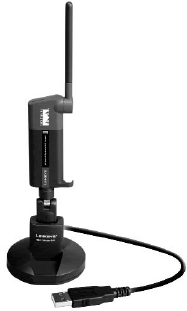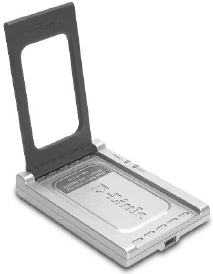USB has become the second most common WLAN adapter type in use, albeit a distant second to CardBus/PC Card.
USB network adapters have the same reason for popularity as any PC peripheral with a USB connection: they set up easily, without opening the PC’s case, and Windows versions starting with 98 Second Edition, especially Windows XP, typically recognize USB-based hardware without difficulty and help you step through the installation process.
Furthermore, you can simply plug your USB-based hardware into the USB port, and unplug it, without any fuss and without any windows popping up on the screen warning you not to. USB works out of the box, and in the PC hardware world that’s a major thing.
The only real problem with USB adapters is that, for notebook users, they don’t offer the same effortless portability. PC Cards fit firmly in the PCMCIA slots and, from the standpoint of mobility, become part of the notebook itself. USB adapters are attached by a USB cable, so it dangles by a thread, as it were, if you try to carry it anywhere.
However, USB adapters work perfectly with desktop PCs, or with a notebook that you don’t intend to move around very much. They tend to be less expensive than PC Cards, and they also tend to have something PC Cards rarely do: an antenna.
Combine an access card’s antenna with a USB adapter’s antenna and you have a better chance of maintaining connectivity between devices than you do with PC cards.
Being able to position and aim the antenna becomes even more apparent when you examine the difficulties of working with PCI wireless adapters, covered under the next heading. USB WLAN adapters take different shapes.
Figures 1 and 2 show two very different USB adapters from two different companies.
The Linksys unit in Figure 1 offers a very small footprint— so you can put it practically anywhere—and an adjustable antenna; the design enables you to move it to the best possible location for receiving wireless signals, or to keep it close at hand and adjust the antenna to receive those signals.
The D-Link adapter in Figure 2 gives you the convenience of closing up into a less breakable product when not in use, with the rectangular antenna folding down onto the main body of the unit, much like closing a small case with a hinged lid.
How far you have the antenna raised, as well as how you face it, determines how well you receive the wireless signal.

